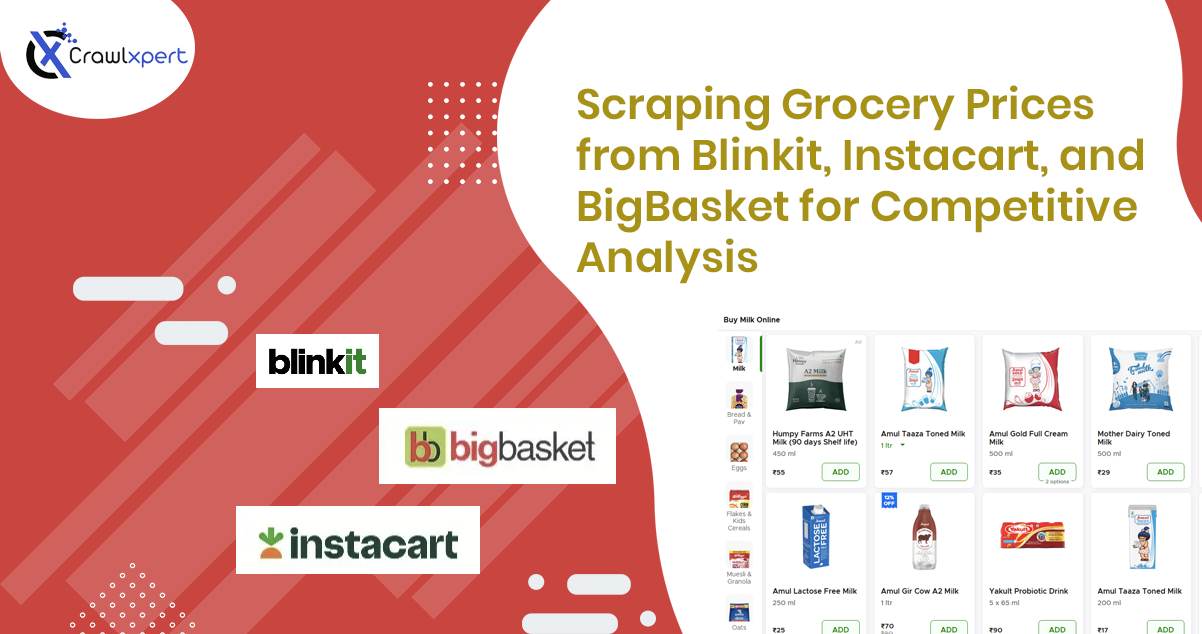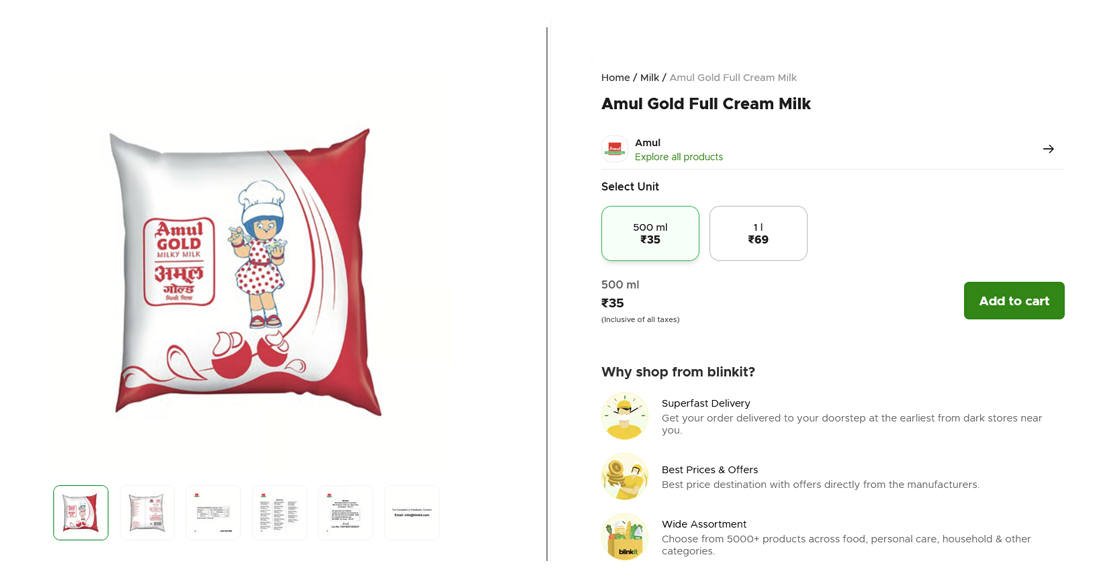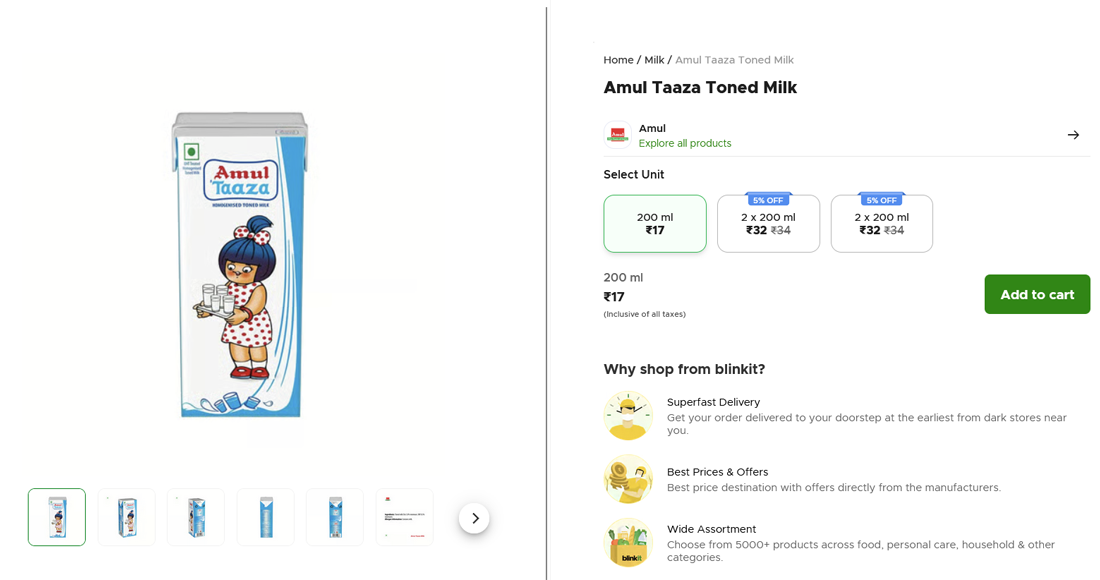
Scraping Grocery Prices from Blinkit, Instacart, and BigBasket for Competitive Analysis
Published on September 30, 2025
In a rapidly digitized retail world, the grocery sector has transformed into a highly dynamic battlefield. From hyperlocal delivery models to large-scale fulfillment centers, pricing strategies vary drastically across platforms like Blinkit (India), Instacart (USA), and BigBasket (India). For businesses operating in the grocery or fast-moving consumer goods (FMCG) domain, staying ahead of pricing trends is critical to ensure competitive parity, profitability, and customer retention.
This blog explores how businesses can use web scraping to collect grocery pricing data from Blinkit, Instacart, and BigBasket. It further explains how to use this data for competitive pricing analysis, including technical techniques, real-world applications, and ethical considerations.

1. Why Grocery Price Scraping Matters
📉 Price Drives Purchase Decisions
Most grocery shoppers are price-sensitive. A ₹2–₹10 difference in staples like milk, rice, or oil
can drive significant customer churn.
🏷️ Dynamic Pricing is the Norm
Prices change due to:
- Demand spikes
- Regional availability
- Promotions & coupons
- Supply chain delays
🛒 Omnichannel Behavior
Customers compare prices between platforms (Blinkit, BigBasket, Instacart) before placing an order.
Businesses need the same lens for pricing intelligence.

2. What Pricing Data Can You Scrape?
Here’s a breakdown of data points useful for competitive pricing analysis:
| Field | Description |
|---|---|
| Product Name | e.g., "Amul Full Cream Milk 1L" |
| Brand | e.g., Amul, Surf Excel, Tata |
| Price | Current selling price |
| MRP (List Price) | Original price before discount |
| Discount | % or flat amount |
| Weight/Volume | 1kg, 500ml, etc. |
| Product Category | Staples, Beverages, Personal Care |
| Availability | In-stock, out-of-stock status |
| Region/Pin Code | Localized availability |
| Date Scraped | For trend over time analysis |
3. Scraping Blinkit for Grocery Prices
🌐 About Blinkit
Blinkit (formerly Grofers) is a 10-minute grocery delivery app serving major Indian cities.
⚙️ Scraping Strategy
Blinkit content is dynamically rendered and location-specific. Use:
- Selenium or Playwright for JS-rendered pages
- BeautifulSoup for parsing
✅ Sample Code to Scrape Product Data:
from selenium import webdriver
from bs4 import BeautifulSoup
import pandas as pd
import time
driver = webdriver.Chrome()
driver.get("https://www.blinkit.com/s/atta")
time.sleep(5)
soup = BeautifulSoup(driver.page_source, 'html.parser')
products = []
for item in soup.find_all('div', class_='ProductCard'):
try:
name = item.find('p', class_='name').text
price = item.find('span', class_='new-price').text
size = item.find('span', class_='qty').text
products.append({'Product': name, 'Price': price, 'Size': size})
except:
continue
df = pd.DataFrame(products)
df.to_csv('blinkit_prices.csv', index=False)
driver.quit()📍 Pin Code Based Filtering
Blinkit requires pin code detection. Use automation or their internal API with pin-based GET
requests to fetch hyperlocal data.
4. Scraping Instacart Grocery Prices
🌐 About Instacart
Instacart partners with multiple U.S. grocery chains like Costco, Safeway, Kroger, and provides
local pricing and delivery services.
⚙️ Scraping Strategy
Instacart heavily uses JavaScript and geo-targeting:
- Use Selenium + headless browser
- Pass location-specific parameters (ZIP codes)
- Parse category and product JSON endpoints
✅ What to Target:
- Product name
- Store (e.g., Costco, Publix)
- Club or non-member price
- Discounted offers
- Product weight
⛔ Caution:
Instacart’s legal terms explicitly restrict scraping. Ensure compliance by using:
- Low frequency
- Ethical use (not resale)
- Data anonymization for internal BI
5. Scraping BigBasket Grocery Prices
🌐 About BigBasket
BigBasket is India’s largest online supermarket, offering wide inventory, region-specific pricing,
and subscription services.
⚙️ Scraping Strategy:
- BigBasket uses public product URLs
- You can use Requests + BeautifulSoup
- Or inspect network calls for paginated JSON endpoints
✅ Sample URL:
https://www.bigbasket.com/pc/fruits-vegetables/fresh-vegetables/
✅ Sample Code:
import requests
from bs4 import BeautifulSoup
url = "https://www.bigbasket.com/pc/fruits-vegetables/fresh-vegetables/"
headers = {"User-Agent": "Mozilla/5.0"}
r = requests.get(url, headers=headers)
soup = BeautifulSoup(r.content, 'html.parser')
items = []
for card in soup.find_all('div', class_='item-details'):
name = card.find('h3').text.strip()
price = card.find('span', class_='discnt-price').text
items.append({'Product': name, 'Price': price})
import pandas as pd
df = pd.DataFrame(items)
df.to_csv('bigbasket_prices.csv', index=False)6. How to Use the Data for Competitive Analysis
Once you’ve collected the pricing data, here’s how to turn it into insights:
📊 6.1 Build a Price Comparison Dashboard
Visualize:
- Price per item across platforms
- Discount differences
- Out-of-stock comparisons
- Excel / Google Sheets
- Power BI / Tableau
- Python (Matplotlib / Seaborn)
📍 6.2 Regional Pricing Strategy
- Map price differences by pin code or ZIP code
- Detect regional pricing gaps
- Launch zone-specific discounts or ad campaigns
🧠 6.3 ML Model: Predict Pricing Trends
Feed your scraped historical data into a model to predict:
- When a product is likely to go on discount
- Category-level price volatility
🛒 6.4 Inventory and Supply Chain Optimization
- Detect which products go out of stock quickly on rival platforms
- Use these insights to maintain your stock buffer
7. Business Use Cases
| Business Type | Scraping Benefit |
|---|---|
| Retailers | Match or beat competitors’ pricing dynamically |
| FMCG Brands | Track how their products are priced across resellers |
| Dark Stores | Monitor competitor stockouts and pricing to adjust fulfillment |
| E-commerce Aggregators | Standardize price data across cities and platforms |
| Market Analysts | Forecast seasonal pricing and inflation impact |
8. Challenges and Solutions
| Challenge | Fix |
|---|---|
| JavaScript-loaded content | Use Selenium or Playwright |
| IP bans | Use rotating proxies |
| Inconsistent naming | Use product ID or barcode where possible |
| Frequent DOM changes | Use try-except + update scraping rules regularly |
9. Ethical and Legal Considerations
Always follow scraping best practices:
- Respect each site’s robots.txt
- Use data for internal competitive analysis, not for resale
- Avoid scraping customer data
- Set user-agents, throttle requests, avoid DDOS-type loads
10. Conclusion
In the ever-competitive world of grocery e-commerce, pricing intelligence is your edge. Scraping price data from Blinkit, Instacart, and BigBasket enables:
- Real-time competitive positioning
- Better promotional planning
- Smart inventory decisions
- Accurate regional pricing models

